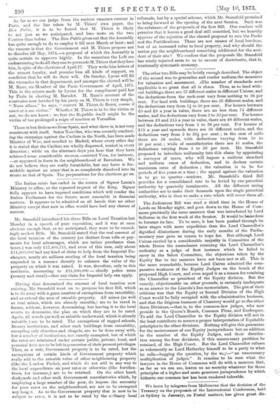The other two Bills may be briefly enough described. The
object of the second was to generalise and render uniform the measures for valuation and assessment. ,pThe number of standards now applicable is so great that all is chaos. Thus, as to land with- out buildings, there are 37 different scales in different Unions, and the deductions from the rack-rent vary from nothing to 24 per- cent. For land with buildings, there are 56 different scales, and the deductions vary from 1 to 50 per cent. For houses between £5 and /8 a year in value, there are no less than 74 different scales, and the deductions vary from 2 to 50 per cent. For houses- between a and £15 a year in value, there are 48 different scales, and the deductions vary from 5 to 36 per cent. For houses of £15 a year and upwards there are 53 different scales, and the deductions vary from 5 to 33k per cent. ; in the case of mills there are 56 scales, with deductions varying from 10 to 50 per cent. ; while of manufactories there are 41 scales, the deductions varying from 5 to 50 per cent. Mr. Stansfeld proposed to introduce unifermity into this chaos by appointing a surveyor of taxes, who will impose a uniform standard and uniform - rates of deduction, and to declare certain. maximum rates of deduction ; the valuation is to be for periods of five years at a time ; the appeal against the valuation is to go to quarter - sessions. Mr. Sta.nsfeld's third Bill provides for a consolidated rate to be levied by one parochial huthority by quarterly instalments. All the different rating authorities are to make their demands upon the single parochial authority, who is then to make a rate which will cover them all..


































 Previous page
Previous page